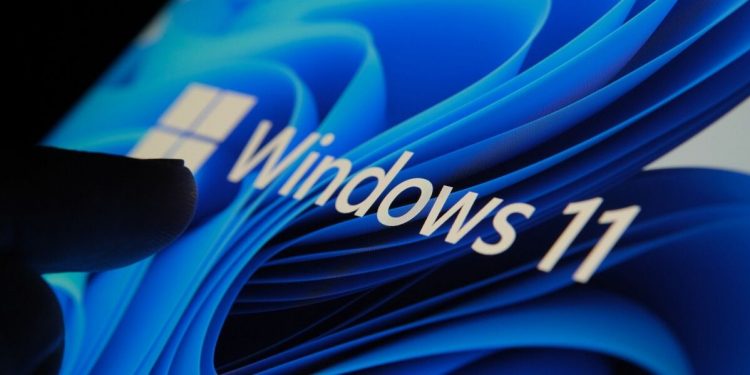Disclosure: Microsoft is a client of the author.
I’ve been following Windows since the 1980s. I was one of the designated launch analysts during the Windows 95 launch and in some ways, I owe my success as an analyst to that launch. It put me on the map as an influential analyst.
I recall some of the pain of those initial years when, for instance, I put Windows 95 on my CEO’s laptop — and bricked it in the process. Then I heard an engineer at Intel had put it on a production machine in one of Intel’s Fabs and crashed the FAB. That was Windows 95, and it began what was to become a long-term relationship between me and Windows.
Now, with Windows 11’s latest update in place, it looks as if this latest version of the OS is ready for the limelight. Let’s look at why it may finally be time to deploy Windows 11.
A brief Windows history
It’s funny, and a little sad, how Microsoft approaches new OS releases now, compared to when it brought out Windows 95. That was both the best and worst of Microsoft’s OS launches — best because the marketing team did its job so well people were lined up around the block to buy it (back then you paid for OS upgrades), worst because the development and support side screwed up the process.
Microsoft hadn’t yet realized it needed to deal with out-of-control PC complexity and diversity. It made changes between the beta and release candidates that made the final product worse than the beta. And then, instead of ramping up support, it did the opposite: people calling for help got a busy signal instead of help, effectively destroying the excellent job the marketing team had done.
Over time, Microsoft has corrected the development issues. Windows 10 was, compared to earlier offerings (Windows Millennium Edition, Windows Vista, and Windows 8) a near-perfect release. Windows 11 was initially plagued with incompatibilities with non-TPM-equipped PCs targeted at consumers and, unfortunately, sold to businesses during the great work-from-home catastrophe that followed COVID-19 shutdowns.
But for firms that stayed with enterprise-ready hardware, the move to Windows 11 has provided higher security, better support for newer hardware and a few other benefits. Forrester, in its Total Economic Impact study, found the OS provided a measurable boost to productivity once it was fully deployed. I find the approach used by Forrester to be better than Gartner’s TCO approach, because it balances benefits against costs rather than focusing excessively on costs.
Targeted benefits
For much of Windows history, what drove development were engineers who thought they psychically understood what users wanted but had problems building out the product to initial specifications. The result? Features that had been promised were often removed before launch. This changed about a decade ago as products like Microsoft Intune provided a more robust connection to actual customer needs, allowing Microsoft to be more responsive to the actual needs of enterprise customers.
As you might expect, this put security features like the hard requirement for TPM as higher priorities, resulting in an OS inherently more resistant to compromise. The latest update includes enhanced phishing protection with Microsoft Defender SmartScreen and Windows Defender Application control for larger enterprises. Smart App Control, another new feature, prevents employees from running malicious apps. Windows Autopatch helps businesses assure patches are installed without disruption. And there is a new application and driver compatibility insight capability in Microsoft Endpoint Manager to reduce problems with malicious or buggy software and drivers.
The Update Compliance feature helps ensure that users update their software regularly and don’t become sources of malware. IT can now provide Organizational Messages to employees above the task bar, alerting them to issues that need immediate attention. And the Microsoft Store App is now integrated with Microsoft Intune to provide better control over the apps employees use and make sure corporate app policies are followed.
For hybrid work, Microsoft has rolled out Windows Studio Effects, which can reduce background noise, provide better auto framing and adjust the appearance of your eyes to make it look as if you are always looking at others on a Zoom or Teams call. Finally, for video conference calls, Live Captions can auto-transcribe audio content to make a presentation easier to understand.
Much of this will be covered in more depth in the upcoming largely virtual Microsoft Ignite event; if you’re interested in the desktop, this could be a must-attend show this year.
Microsoft’s changing focus
Once upon a time, the rollout of products like Windows 95 was driven less by needs of the market and more by the need to generate revenue. Times have changed. The revenue motivation (given the tie between revenue and upgrades is weaker now) has been reduced, and upgrades are now more closely tied to security, productivity, and ease of management. This tends to make upgrades less discretionary, because short-term employee disruption (which has also declined) is better than an almost certain breach — and the benefits clearly outweigh costs, as the Forrester study showcased.
It may be time to deploy Windows 11, but be aware, the benefits will be closely tied to new features that will require some training and integration into existing IT policy to be effective. If you can’t do the latter, it might make sense to wait on the former. And you’ll need to implement tools such as Microsoft Intune to best take advantage of the benefits promised by Windows 11.
On a personal note, I’ve been using Windows 11 since launch and now I can’t stand using Windows 10 machines. (But it did take me a few days to get used to the differences.)
In the end, the enhanced security of Windows 11 best justifies its use. Because, as with any security-focused release, delaying the upgrade leaves in place the potential for a massive breach no one wants.
Copyright © 2022 IDG Communications, Inc.
Source by www.computerworld.com






























